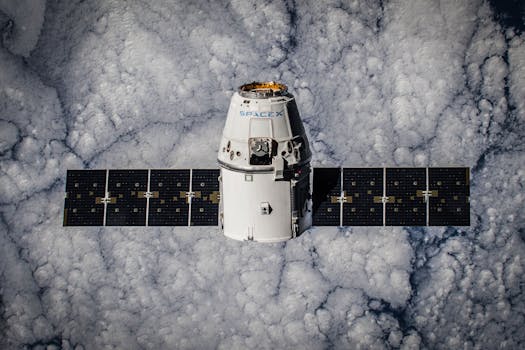
The Future of Satellite Technology: Trends and Innovations
The future of satellite technology is rapidly evolving with advancements in trends and innovations, transforming the way we communicate, navigate, and understand our planet. Satellite technology has come a long way since the launch of the first artificial satellite, Sputnik, in 1957. Today, satellites play a crucial role in various aspects of our lives, from providing internet connectivity to enabling global navigation and weather forecasting.
Satellite technology is expected to continue to play a vital role in shaping our future, with new trends and innovations emerging every year. One of the most significant trends in satellite technology is the development of small satellites, also known as CubeSats. These small satellites are smaller, lighter, and less expensive than traditional satellites, making them more accessible to a wider range of organizations and individuals. They are also more flexible and can be launched into orbit more quickly, allowing for faster deployment of new technologies and services.
Advancements in Satellite Technology
Another significant trend in satellite technology is the advancement of satellite propulsion systems. Traditional satellites use chemical propulsion systems, which are heavy and require a lot of fuel. However, new propulsion systems, such as electric propulsion and advanced ion engines, are being developed, which are more efficient and require less fuel. This will enable satellites to stay in orbit for longer periods and reduce the cost of launching and operating them.
Satellite technology is also being used to develop new services and applications, such as satellite-based internet connectivity. Companies like SpaceX and Amazon are launching constellations of satellites to provide global internet coverage, which will enable people in remote and underserved areas to access the internet. This will have a significant impact on education, healthcare, and economic development in these areas.
In addition to these trends, satellite technology is also being used to develop new technologies, such as satellite-based navigation and timing. The Global Positioning System (GPS) is a network of satellites that provides location information and timing signals to GPS receivers on the ground. This technology is used in a wide range of applications, from navigation and mapping to financial transactions and scientific research.
Challenges and Opportunities
Despite the many advancements and innovations in satellite technology, there are also challenges and opportunities that need to be addressed. One of the biggest challenges is the growing amount of space debris in Earth’s orbit. Space debris is made up of old satellites, rocket parts, and other objects that are no longer in use and are orbiting the Earth. This debris can pose a significant risk to operational satellites and spacecraft, and it is essential to develop technologies and strategies to mitigate this risk.
Another challenge is the need for more sustainable and environmentally friendly satellite technologies. Traditional satellites are made of materials that are not biodegradable and can contribute to pollution and waste. There is a need to develop satellites that are more sustainable and can be recycled or disposed of in a responsible manner.
Despite these challenges, there are many opportunities for innovation and growth in the satellite technology industry. The development of new satellite technologies and services is creating new opportunities for businesses, governments, and individuals to access space and use satellite-based services. This is expected to drive economic growth and development, particularly in areas such as telecommunications, navigation, and Earth observation.
Conclusion
In conclusion, the future of satellite technology is rapidly evolving with advancements in trends and innovations. Satellite technology is expected to continue to play a vital role in shaping our future, with new trends and innovations emerging every year. From the development of small satellites to the advancement of satellite propulsion systems, satellite technology is transforming the way we communicate, navigate, and understand our planet. While there are challenges and opportunities that need to be addressed, the satellite technology industry is expected to drive economic growth and development, particularly in areas such as telecommunications, navigation, and Earth observation.

